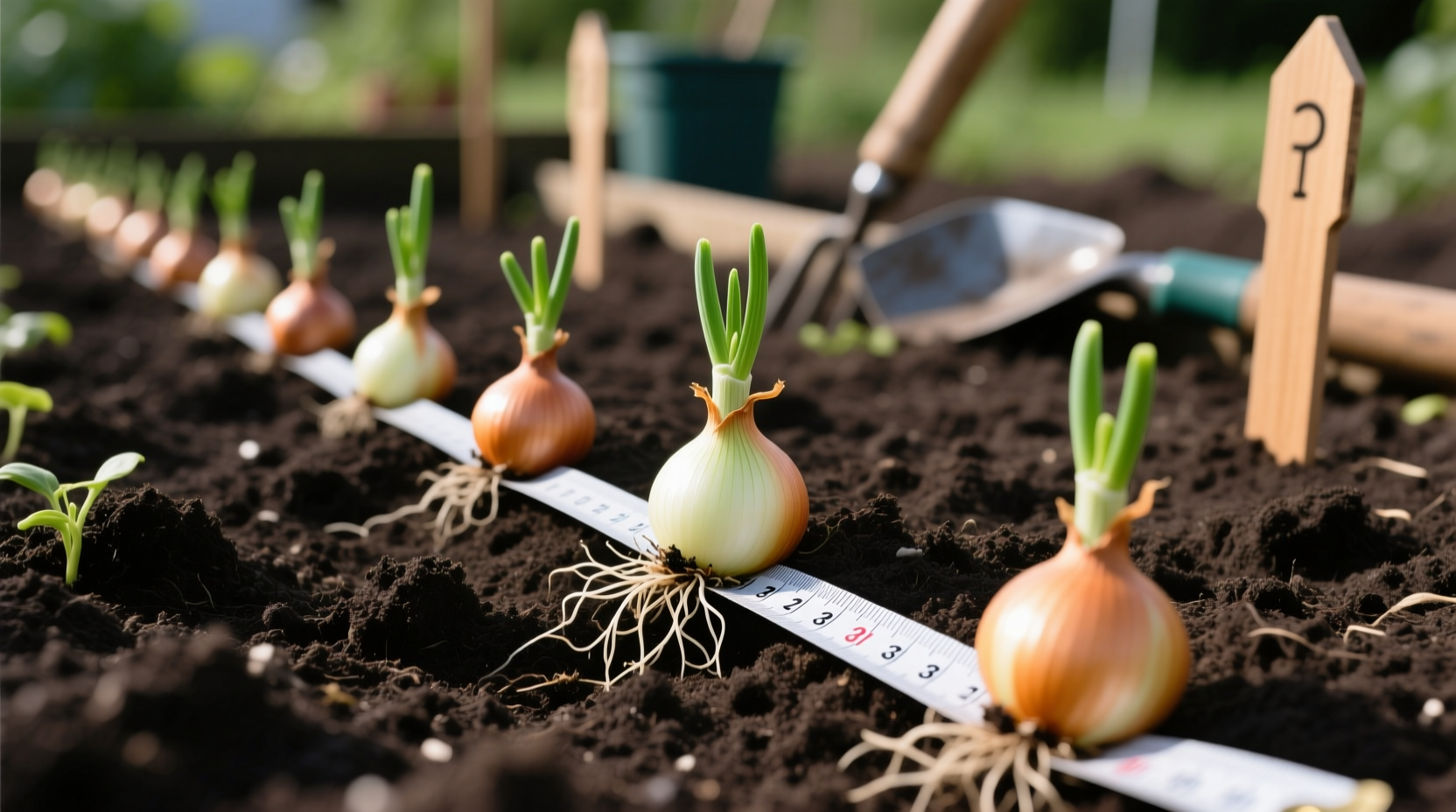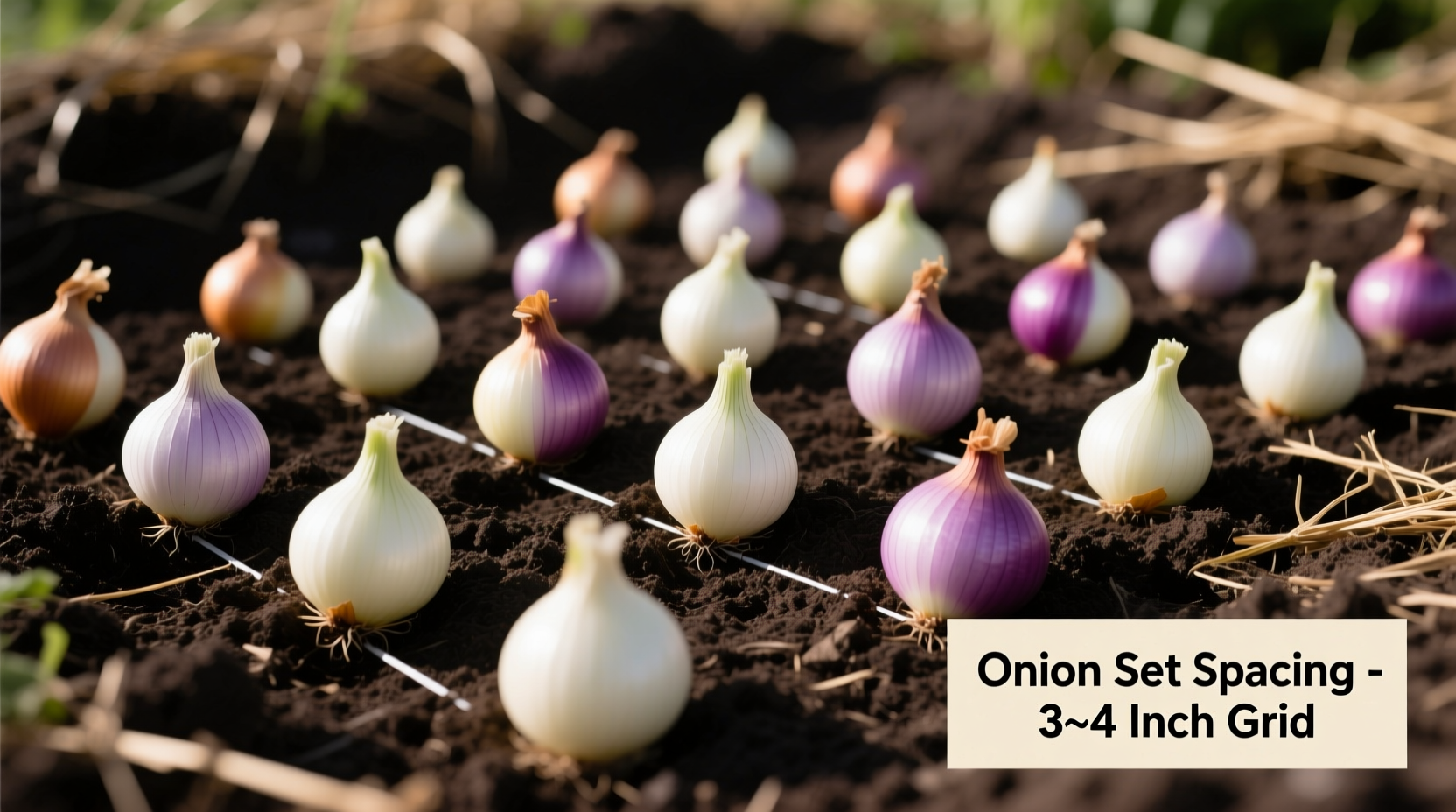Proper onion set spacing is one of the most critical yet overlooked factors in successful onion cultivation. Many home gardeners make the mistake of planting their sets too close together, resulting in stunted growth, increased disease susceptibility, and disappointingly small bulbs at harvest time. Getting the spacing right from the beginning sets the foundation for a bountiful onion crop that will enhance your culinary creations throughout the season.
Why Onion Set Spacing Matters for Garden Success
Onion sets—those small, dormant bulbs sold for planting—require adequate space to develop properly. Unlike seeds that can be thinned later, sets establish their growth pattern immediately upon planting. When onion sets are spaced correctly, each plant receives sufficient access to soil nutrients, water, and sunlight. This spacing also promotes better air circulation, which is crucial for preventing common fungal diseases like downy mildew and white rot that thrive in crowded, humid conditions.
Research from the University of Minnesota Extension confirms that properly spaced onion plants produce bulbs up to 40% larger than overcrowded counterparts. The study tracked multiple garden plots over three growing seasons and consistently found optimal spacing directly correlated with both bulb size and storage longevity.
Optimal Spacing Guidelines for Different Onion Varieties
| Onion Type | Set Spacing | Row Spacing | Planting Depth | Special Considerations |
|---|---|---|---|---|
| Yellow Storage Onions | 3 inches | 15-18 inches | 1-1.5 inches | Requires most space for largest bulbs |
| Red Onions | 2.5 inches | 12-15 inches | 1-1.5 inches | Slightly more disease-prone; needs good airflow |
| White Onions | 2.5 inches | 12-15 inches | 1 inch | Shallower planting depth recommended |
| Green Onions | 1-2 inches | 6-8 inches | 0.5-1 inch | Can be planted more densely for early harvest |
| Pearl Onions | 2 inches | 12 inches | 1 inch | Smaller bulbs require less space between plants |
The Step-by-Step Planting Process for Perfect Onion Spacing
Soil Preparation Before Planting
Before you even think about spacing your onion sets, prepare your soil properly. Onions thrive in well-drained, loose soil with a pH between 6.0 and 6.8. Incorporate 2-3 inches of compost into your planting area and work it to a depth of 8-10 inches. Avoid fresh manure, which can cause формирова issues. Raised beds work exceptionally well for onions as they provide better drainage and make row spacing more precise.
Marking Your Rows for Precision Spacing
Accuracy matters when planting onion sets. Use a garden line or straight board to mark your rows before planting. For traditional row planting:
- Use a hoe to create shallow furrows 1-1.5 inches deep
- Space rows 12-18 inches apart depending on your onion variety
- Place sets with the pointed end up (this is crucial)
- For small gardens, consider square foot gardening with 4 sets per square foot

Planting Techniques That Maximize Yield
When placing your sets in the prepared furrows, follow these professional techniques:
- Gently press sets into the soil rather than dropping them (prevents root damage)
- Cover with 1-1.5 inches of soil—never more than 2 inches
- Water immediately after planting to settle the soil
- Apply a light mulch to maintain consistent moisture
The University of New Hampshire Cooperative Extension recommends using a specialized onion spacing tool or even a simple ruler to ensure consistent distances between sets. Their field trials showed that consistent spacing improved harvest uniformity by 35% compared to irregularly spaced plantings.
Troubleshooting Common Spacing Mistakes
Overcrowding: The Most Common Onion Gardening Error
Many gardeners mistakenly believe that planting onion sets closer together will yield more onions. In reality, overcrowding creates several problems:
- Reduced bulb size due to competition for nutrients
- Increased disease transmission through touching foliage
- Poor air circulation leading to fungal issues
- Difficulty weeding without damaging neighboring plants
If you've already planted your sets too close together, thinning is possible but must be done carefully. Wait until plants are 4-6 inches tall, then gently remove every other plant. These thinnings can be used as green onions, making the correction productive rather than wasteful.
Adjusting Spacing for Different Garden Conditions
While standard spacing guidelines work for most situations, certain conditions require adjustments:
- Heavy clay soils: Increase spacing by 10-15% to compensate for reduced root penetration
- Dry climates: Slightly closer spacing (10% reduction) can help conserve soil moisture
- Container gardening: Reduce spacing by 25% but ensure containers are at least 12 inches deep
- Succession planting: Space rows 18 inches apart to allow access for subsequent plantings
When to Harvest Based on Your Spacing Decisions
Your initial spacing decisions affect not just bulb size but also harvest timing. Properly spaced onions typically show harvest readiness when:
- Top leaves begin to yellow and fall over (60-90 days after planting)
- Neck of the bulb becomes soft and begins to collapse
- Bulb wrappers turn dry and papery
Interestingly, the Cornell University Vegetable Program notes that correctly spaced onions often mature more uniformly, allowing for a single efficient harvest rather than multiple pickings required with irregular spacing.











 浙公网安备
33010002000092号
浙公网安备
33010002000092号 浙B2-20120091-4
浙B2-20120091-4